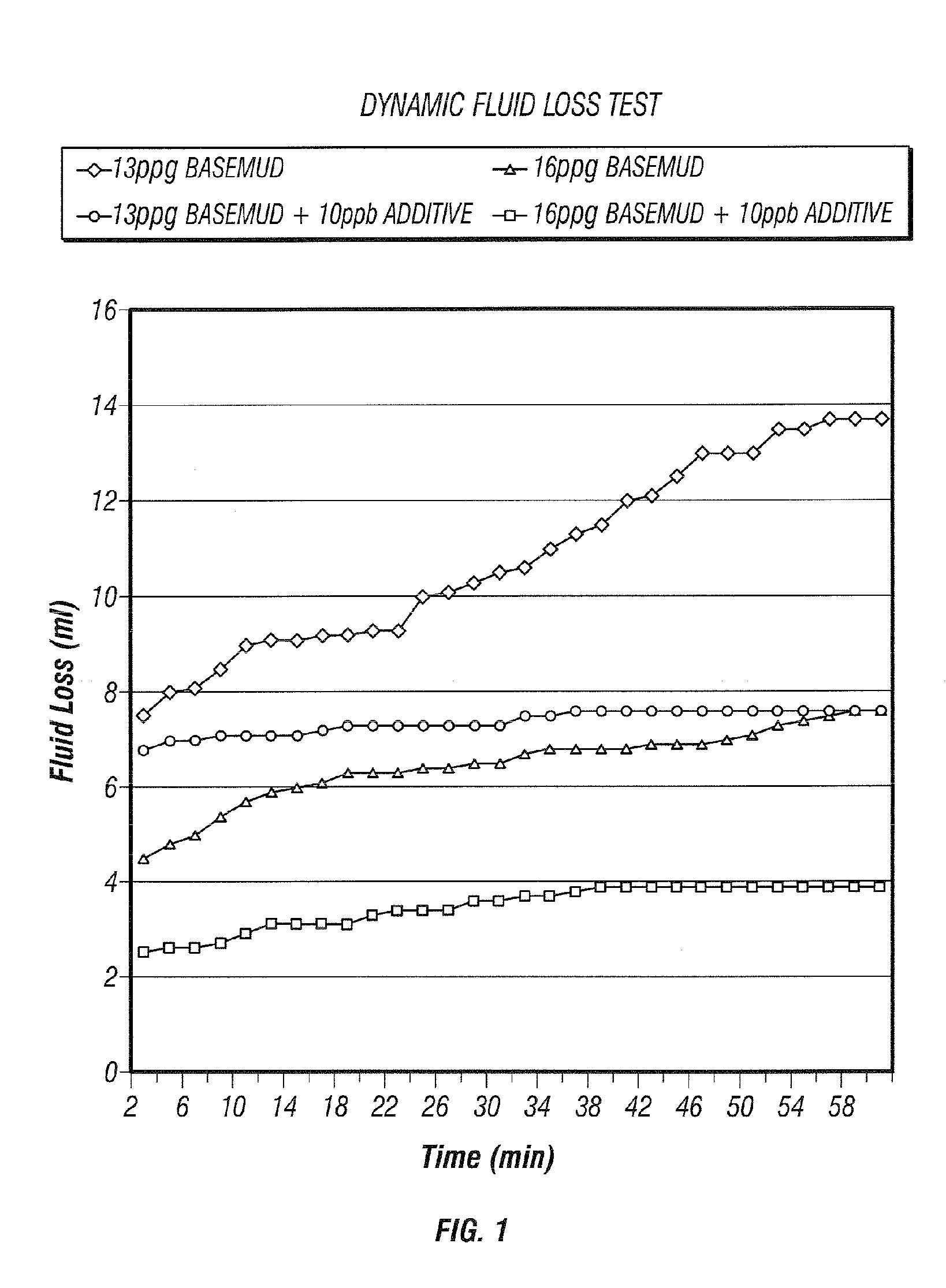Method and composition for inhibiting lost circulation during well operation
a well and circulation technology, applied in the direction of fluid removal, chemistry apparatus and processes, borehole/well accessories, etc., can solve the problems of increasing the loss of drilling fluids beyond an acceptable limit, asbestos is undesirable for widespread commercial use, and practically all of the drilling fluid may be lost to the formation
- Summary
- Abstract
- Description
- Claims
- Application Information
AI Technical Summary
Benefits of technology
Problems solved by technology
Method used
Image
Examples
example 1
[0033]Simulated tests were conducted on an Ofite Dynamic High Pressure High Temperature apparatus (DHPHT). The apparatus is designed to simulate conditions present within the well. The apparatus is a stainless steel pipe having an inside diameter of 5.7 cm (2.25 in.), a volume of 500 mL, and is capped at each end. The apparatus is equipped with an impeller which causes the mud to flow in a pattern that simulates the use of drilling fluid within the drill pipe (i.e. the fluid flows down the center of the test apparatus and returns along the walls of the test apparatus. On one end of the testing apparatus is a porous disk from which seepage measurements are taken. Measurements are taken at an initial starting point, and then at 2 minute intervals for a total of 60 minutes. The test is designed to demonstrate the ability of a given material to prevent seepage and loss circulation, as well as predicting the ability of the material to form a stable filter cake in the well bore. The tests...
example 2
[0040]Tests were conducted using a 16 ppg mud having a synthetic / water ratio of approximately 73 / 27 and containing approximately 35% solids by volume. The loss control additive, having a composition of 50% by weight PSF, 25% by weight lignite, and 25% by weight fully reacted phenol-formaldehyde resin, was tested at a concentration of 10 pounds per barrel of drilling fluid. Tests were conducted 3.5 MPa (2000 psi) and a temperature of 93° C. (200° F.). Seepage was measured over a 150 micron disk.
[0041]Initial spurt measurements for the test sample were approximately 0 mL and a total fluid loss of approximately 0.8 mL. The base mud had an initial spurt measurement of approximately 24.4 mL and a total fluid loss of approximately 26.4 mL. Thus, fluid loss in the sample having the loss control additive was approximately 40% of that for the base mud.
PUM
| Property | Measurement | Unit |
|---|---|---|
| diameter | aaaaa | aaaaa |
| diameter | aaaaa | aaaaa |
| density | aaaaa | aaaaa |
Abstract
Description
Claims
Application Information
 Login to View More
Login to View More - R&D
- Intellectual Property
- Life Sciences
- Materials
- Tech Scout
- Unparalleled Data Quality
- Higher Quality Content
- 60% Fewer Hallucinations
Browse by: Latest US Patents, China's latest patents, Technical Efficacy Thesaurus, Application Domain, Technology Topic, Popular Technical Reports.
© 2025 PatSnap. All rights reserved.Legal|Privacy policy|Modern Slavery Act Transparency Statement|Sitemap|About US| Contact US: help@patsnap.com

